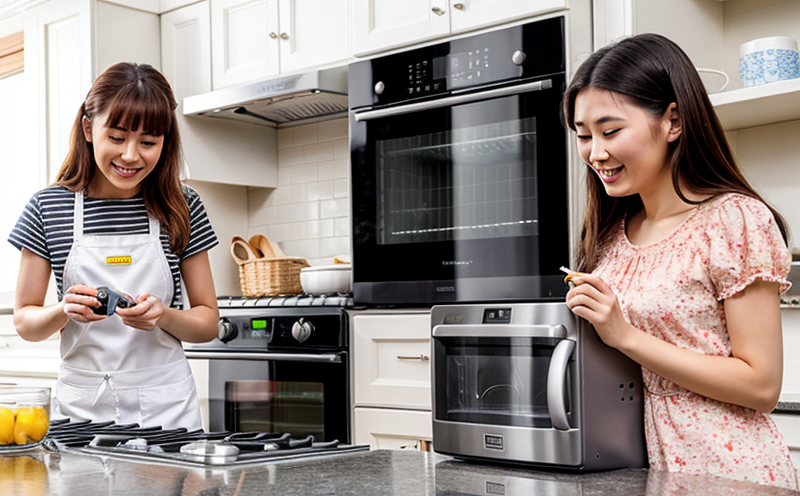Household Electrical Appliances Testing
The testing of household electrical appliances is an essential process that ensures consumer safety and product reliability. This service involves a series of laboratory tests aimed at assessing various performance parameters to comply with international standards such as IEC, IEEE, and national regulations like UL (Underwriters Laboratories) in the United States.
Household electrical appliances cover a broad spectrum including but not limited to refrigerators, washing machines, dishwashers, ovens, and air conditioners. These devices are subject to rigorous testing to ensure they meet safety requirements, energy efficiency standards, and performance criteria. The goal is to identify potential hazards early in the product lifecycle, ensuring that appliances operate safely within specified conditions.
Testing typically involves multiple stages including initial design review, prototype evaluation, production lot inspection, and final installation verification. Each stage ensures that the appliance functions as expected under real-world usage scenarios. For instance, a refrigerator may undergo voltage stability checks to ensure it operates correctly even when electrical supply varies by ±10%, or a washing machine might be tested for water leakage during high-speed spin cycles.
Another critical aspect of this testing is ensuring that the appliance complies with electromagnetic compatibility (EMC) standards. This prevents interference between different electronic devices within homes, which can lead to malfunctions or failures. EMC tests check for emissions and susceptibility levels to ensure appliances do not disrupt other systems in close proximity.
Compliance officers and quality managers rely on accurate testing results to maintain a consistent product line that meets regulatory requirements across multiple jurisdictions. R&D engineers use this information to refine designs based on feedback from test data, improving future iterations of their products. By adhering strictly to international standards like IEC 60335-2-8 (which covers safety aspects for household and similar electrical appliances), manufacturers can ensure global market acceptance while minimizing risks associated with non-compliance penalties.
Benefits
The benefits of thorough testing extend beyond mere compliance; they provide tangible advantages that enhance both consumer satisfaction and brand reputation. Firstly, conducting comprehensive tests reduces the likelihood of product recalls due to safety issues or malfunctions, thereby protecting manufacturers from costly legal actions and negative publicity.
- Enhanced Consumer Trust: Meeting stringent standards builds trust among consumers who value safe products above all else.
- Increased Market Share: By demonstrating adherence to international norms, companies can attract customers seeking reliable appliances worldwide.
- Improved Product Lifespan: Rigorous testing helps identify weaknesses early on, allowing for corrective measures that extend the useful life of products.
In addition, compliance with established guidelines fosters innovation by encouraging continuous improvement in design and functionality. This proactive approach not only meets current market demands but also anticipates future trends, positioning brands as leaders in their respective fields.
Why Choose This Test
- Regulatory Compliance: Ensures adherence to international standards like IEC and national regulations such as UL, ensuring safe operation of appliances within specified parameters.
- Safety Assurance: Identifies potential hazards early in the development process, safeguarding end-users from electrical shocks or fires.
- Eco-Friendly Solutions: Tests for energy efficiency help reduce environmental impact by promoting sustainable practices throughout manufacturing processes.
- Innovation Drive: Encourages ongoing improvements through detailed analysis and feedback collection during each testing phase.
Selecting this service guarantees accurate, reliable outcomes that contribute significantly towards maintaining high-quality standards. It serves as a cornerstone for establishing robust quality assurance systems within organizations dedicated to excellence in product development.
International Acceptance and Recognition
Testing household electrical appliances according to recognized international standards ensures global acceptance of products across diverse markets. Many countries have adopted these guidelines because they provide a consistent framework for evaluating safety, performance, and environmental impact.
For example, the IEC 60335-2 series provides comprehensive specifications covering various aspects of household electrical appliances from basic requirements to detailed technical criteria. Compliance with these standards not only facilitates easier export but also enhances credibility among buyers internationally who recognize the value of certified products.
National bodies like UL in North America, VDE in Europe, and JIS in Japan play crucial roles in certifying local compliance while aligning closely with international norms. By obtaining such certifications, manufacturers demonstrate their commitment to quality assurance, which is increasingly becoming a key factor influencing purchasing decisions worldwide.





